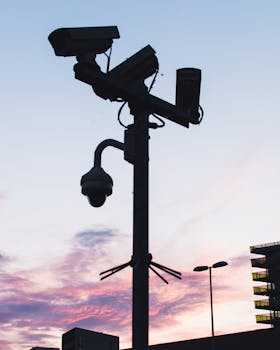Wide vs Ultrawide vs Telephoto: Which Smartphone Lens Should You Use?
9/25/2025 · Cameras · 7 min

TL;DR
- Wide (main) lens is the most versatile. Best all-around for low light, detail, and everyday shots.
- Ultrawide captures more scene and creative perspectives. Great for landscapes, architecture, and cramped interiors, but watch for distortion and softer corners.
- Telephoto gives optical reach for portraits and distant subjects. Better subject isolation and less crop noise than digital zoom.
- Choose based on use case: travel and landscapes pick ultrawide plus main; portrait and wildlife favor telephoto plus main; if you only get one, go main.
Lens roles at a glance
- Main (wide): usually the largest sensor and best performer in mixed lighting. Default for most shots.
- Ultrawide: shorter focal length, wider field of view. Adds context and drama.
- Telephoto: longer focal length, narrower field of view. Brings subjects closer without moving.
Sensor size and pixel pitch matter more than focal length alone
- Many phones use smaller sensors on ultrawide and telephoto modules. That often means poorer low light and dynamic range versus the main sensor.
- Larger pixels gather more light. A main sensor with bigger pixels will outperform a tiny telephoto in dim scenes, even if the telephoto has optical zoom.
- Check sensor specs and sample shots, not just megapixels. A 12 MP large sensor can beat a 50 MP tiny sensor in real world capture.
Low light performance
- Main lens: best low light behavior due to bigger sensor and faster aperture on many designs. Use night mode for longer exposures and better dynamic range.
- Ultrawide: usually weaker in low light. Expect more noise and softer detail. When shooting at night, stick to the main lens or use computational algorithms that may stitch multiple frames.
- Telephoto: depends on sensor size and aperture. Periscope telephotos with larger sensor areas can be surprisingly good at dusk, but small tele modules often struggle.
Portraits, subject isolation, and bokeh
- Telephoto is the natural portrait lens thanks to flattering perspective and background compression. It helps separate subject from background without relying entirely on software blurring.
- Main lens also works well for portraits, especially on phones that use dual-pixel AF and good edge detection.
- Ultrawide portraits can distort facial features if you get too close. Use for environmental portraits where context matters.
Distortion and correction
- Ultrawide lenses naturally produce barrel distortion near the edges. Most phones correct this with software, but that can reduce resolution at the edges.
- Watch for perspective exaggeration on ultrawide shots of people close to the camera. Step back and crop if needed.
Video considerations
- Main lens: best choice for low light and stabilisation. Many phones apply the best image stabilization on the main sensor.
- Ultrawide: ideal for action shots, vlogging with wide framing, and dramatic establishing shots. Stabilization may be less effective on smaller ultrawide sensors.
- Telephoto: useful for cinematic shots with compressed backgrounds, but stabilization and autofocus performance vary. Optical stabilization on the tele module is a major plus.
Computational photography and multi-lens synergy
- Modern phones combine data from multiple lenses to improve detail, dynamic range, and night shots. This means even a weaker ultrawide can contribute texture and color to the final image.
- Smart switching between lenses during video or high resolution mode keeps quality consistent. Check how fluid a phone is when it transitions between lenses.
File size and storage impact
- Using multiple lenses, higher resolution outputs, or lossless dual capture increases file size. Raw capture from each lens will also consume more space. Balance quality needs with storage and backup plans.
Which lens should you prioritize?
- Pick the main lens if you want one reliable camera for most situations. It is the safest choice for low light, video, and overall image quality.
- Add ultrawide if you frequently shoot landscapes, interiors, or group shots and value creative framing.
- Add telephoto if portraits, distant subjects, or compression for video matter to you. Optical zoom or a true periscope telephoto is preferable to digital crop.
Buying checklist
- Sensor size and pixel pitch for each module. Bigger is generally better.
- Aperture for low light performance. Lower f-number helps gather light.
- Optical stabilization on main and tele modules for sharper photos and smoother video.
- Optical focal lengths or equivalent zoom range. Avoid phones that rely on heavy digital zoom.
- Sample photos in the situations you care about: day, night, portraits, and video.
- Software features: portrait mode quality, night mode, raw capture, and lens switching smoothness.
- Storage and backup: plan for larger files if you shoot in raw or use multi-lens captures.
Bottom line
If you must choose one, the main wide lens delivers the best all-around results. Add ultrawide for creative framing and telephoto for portraits and reach. When shopping, look past megapixels and focus on sensor size, stabilization, and real world samples to find the combination that matches how you shoot.
Found this helpful? Check our curated picks on the home page.